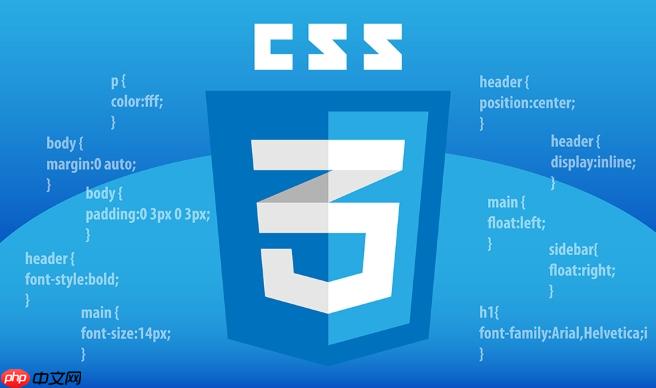答案:使用Flexbox或绝对定位实现页脚固定。①Flexbox方案:设置html、body高度100%,容器display:flex、flex-direction:column,内容区flex:1;②绝对定位方案:内容区min-height:100vh、margin-bottom负值,配合等高push元素预留页脚位置。推荐优先使用Flexbox,兼容性好且易于维护。

要实现页脚固定在页面底部的布局,即使内容很少也能让页脚始终贴在视窗最下方,可以通过几种常见的 CSS 方法来完成。下面介绍两种实用且兼容性良好的方案。
这是目前最简洁、最常用的实现方式,适用于现代浏览器。
基本思路是将整个页面结构包裹在一个容器中,并设置该容器为弹性布局,使主体内容区域自动撑满剩余空间,从而把页脚“推”到页面底部。
HTML 结构:
立即学习“前端免费学习笔记(深入)”;
<div class="container"> <header>头部内容</header> <main class="content">主体内容</main> <footer>固定页脚</footer> </div>
CSS 样式:
html, body {
height: 100%;
margin: 0;
padding: 0;
}
<p>.container {
min-height: 100vh;
display: flex;
flex-direction: column;
}</p><p>.content {
flex: 1;
padding: 20px;
}</p><p>footer {
background-color: #333;
color: white;
text-align: center;
padding: 10px 0;
}</p>关键点在于:
display: flex 和 flex-direction: column
flex: 1 占据所有可用空间适用于不支持 Flexbox 的旧环境,或需要更精确控制的情况。
CSS 样式:
html, body {
margin: 0;
padding: 0;
}
<p>.content {
min-height: 100vh;
margin-bottom: -60px; /<em> 负值等于页脚高度 </em>/
}</p><p>footer, .footer-push {
height: 60px;
}</p><p>footer {
background-color: #333;
color: white;
text-align: center;
padding: 20px 0;
}</p>HTML 结构:
立即学习“前端免费学习笔记(深入)”;
<div class="content"> <!-- 页面内容 --> <div class="footer-push"></div> </div> <footer>固定页脚</footer>
说明:
如果项目不需要兼容非常老的浏览器(如 IE9 及以下),强烈推荐使用 Flexbox 方案。代码更清晰,维护更方便,适应性更强。绝对定位方案可作为降级备用。
基本上就这些,不复杂但容易忽略细节,比如 html/body 高度设置和 box-sizing 影响。实际开发中建议结合重置样式一起使用,确保一致性。
以上就是如何通过css实现页脚固定布局的详细内容,更多请关注php中文网其它相关文章!

每个人都需要一台速度更快、更稳定的 PC。随着时间的推移,垃圾文件、旧注册表数据和不必要的后台进程会占用资源并降低性能。幸运的是,许多工具可以让 Windows 保持平稳运行。

Copyright 2014-2025 https://www.php.cn/ All Rights Reserved | php.cn | 湘ICP备2023035733号